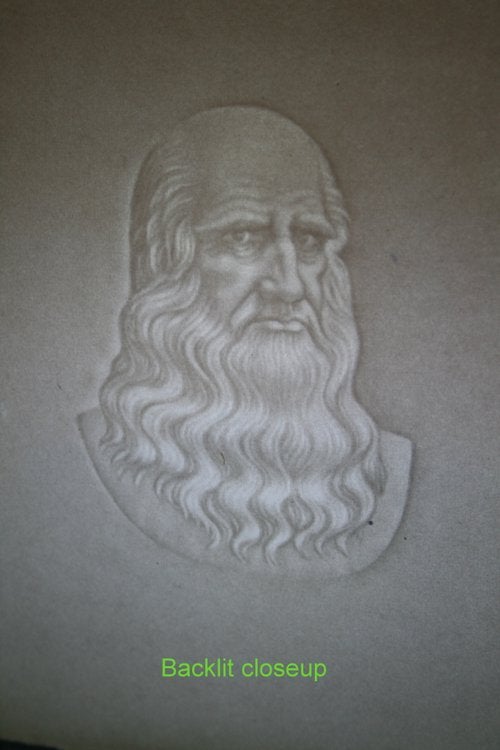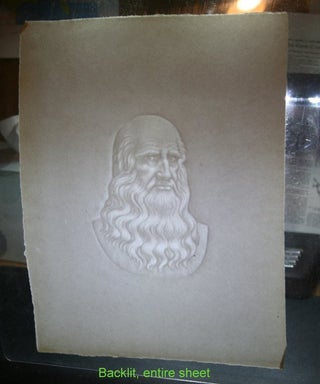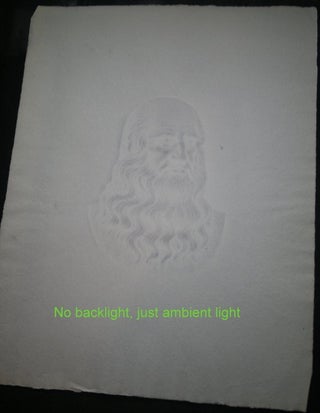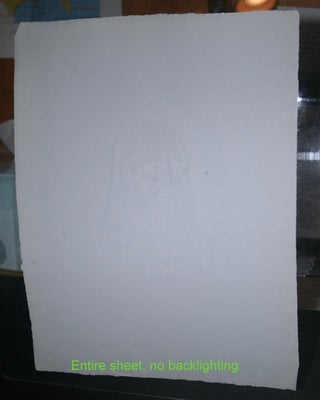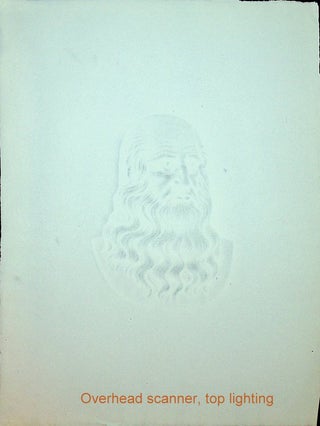LEONARDO DA VINCI Chiaroscuro Watermark on light blue/grey paper
Fabriano, Italy: [Cartiere Miliani Fabriano] [no date]. Single sheet of blue grey paper with a few blemishes. 8 3/4 x 11 5/8 inches. With centered watermark of Leonardo Da Vinci, the image roughly 4 x 5 1/4 inches. A touch of wear and minor folding at extremities, an excellent example. Near Fine. [27904]
Variously called shadowmarks, light-and-shade watermarks, or chiaroscuro watermarks, each design is a work of art that may take months to perfect. Julie L. Mellby at Princeton University Library Graphic Arts on July 26, 2010 posted the following about a different design in their collection: "This sheet of handmade paper comes from the Fabriano Paper Mill in Milan. In regular light, it looks like a blank sheet but when you hold it to the light, the watermark becomes visible. The image...comes from the variations in thinness or thickness in the paper. The watermark begins with the Italian artisan ... carving the engraving in wax; a process that may take from five months to a year to complete. Copper dies (positive & negative) are made from the wax sculpture. The dies are pressed into a brass screen, which will form the papermaking mould. Then, tiny wads of screen must be stuffed and stitched invisibly into the mould as reinforcements in all the cavities, such as the forehead or cheeks."
We consulted with paper historian Sidney Berger whose massive historical paper collection ("considered one of the strongest of its kind" - Texas A&M, 2016) is now at Texas A&M. Sid tells us "I am 99.99% sure [your watermark] is from Fabriano" and further suggests we "point out that it is a rare variant lacking the name of the company." He also added that while "wax was used, ... by the end of the 18th century the artists could use an electroplating method to create the male and female dies" and notes it "is a fine example of such a watermark."
We love this item because it speaks to us of a great scientist and historical figure as well as the spirit of real artistic craftsmenship. Compared to a traditional wire frame watermark, this is a spectacular piece of art.
Price: $150.00


